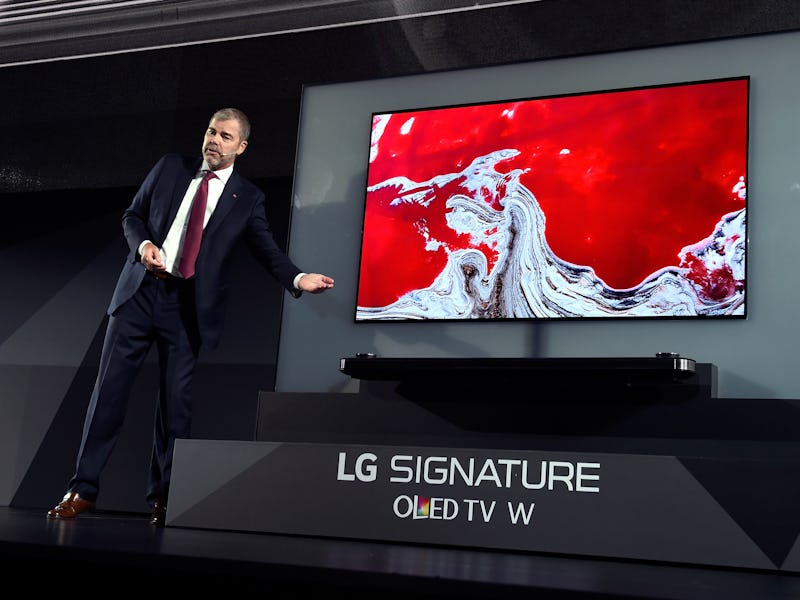OLED: The Technology Behind LG's Insanely Thin TV is All-Natural
It's thinner than your finger.

In Las Vegas on Wednesday, LG unveiled OLED Signature W “Wallpaper” TV at the CES 2017, and it’s unbelievably thin, thanks to electroluminescence.
The series has ten models of varying sizes up to 77 inches wide, and the 65-inch screen will hit stores by March. With a panel that’s only 2.57 millimeters, you can directly mount the TV screen on your wall. That’s right, an OLED (pronounced “Oh-led”) TV is thinner than your finger.
The TV can be so thin because it uses OLED — which means organic light emitting diodes — technology. OLED screens are made with organic compounds that light up and glow colors when electricity passes through them. OLED pixels create their own light. In contrast, LCD screens use color filters and light-blocking liquid crystals above an LED backlight, and plasmas use RGB phosphors.
It's this thin.
This effect is called electroluminescence, and it allows the screen to have excellent picture quality, as it creates light depending on how much electric current is sent through the pixels. The screens have pixel-dimming control technology, which allows them to render perfect black by shutting off the pixels completely — and thus, no light. On the other hand, the more electricity there is, the more light the pixels emit.
“It’s this design concept that’s going to transform the viewing experience at home,” Dave VanderWaal, vice president of marketing for LG Electronics USA, from the stage at CES on Wednesday. “It’s going to make your consumers feel as if you’re looking into a window into another world.”
Since the screens use OLED, they can be made to be very thin. Unlike LCD screens, OLED screens don’t need a backlight. The screen also has expanded colors, increased brightness, and wider viewing angles.
“Viewers can recapture the magic of the cinema and experience their favorite movies with their original clarity, depth and imagination intact,” said Tim Alessi, head of product marketing at LG Electronics USA
Unlike the all-in-one TV you have at home, the screen on LG’s OLED TV is just a screen. It’s connected to a wire that connects to a processor you’d put on the stand or shelf where your TV used to sit. You can also hide the wire in the wall for a seamless experience that allows you to sip your tea and look out the window, free of anxiety caused by loose, ugly wires.
“It causes [the TV] to appear as though it’s levitating” because of magnetic brackets, VanderWaal explained to the CES crowd.
Ahhhhh.
Of course, the hyper-competitive consumer electronics market yielded same-day competition for LG: Panasonic debuted its own OLED TV at CES on Wednesday.
Watch the full debut here: